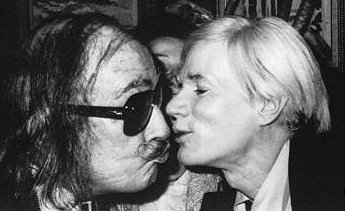"To me, bad taste is what entertainment is all about."--John Waters
Welcome to POP!blog!, dedicated to the hows and whys of turning one man's trash into an art lover's treasure. Some of this blog is being written as part of a Pop Culture class at Georgia State University. (blogs that apply to class are numbered) The idea is to take a section of popular culture we are interested in and milk it each week for its relevance to our studies. Since I am admittedly head-over-heels for pop art, cult cinema, trashy b-movies, horror films, and modern art, my blog will reflect the way the Pop Art movement and the study of popular culture has influenced and shaped the way we view "cult" movies. Some cult films, like Pink Flamingos, were instant midnight-movie successes. Others, like Russ Meyers' Beyond the Valley of the Dolls, have taken some time to be regarded as classics.
Some of these movies were completely lost for a time to VHS or even DVD only to be discovered by generations on late-night cable or Netflix. Time and history have a way of turning even the most cheap, off-putting film into a beloved representation of its era. But not all of them. Why? How? That's what I hope to focus on with POP!blog.
now that's downtown! shot of New York's Time's Square district in the 1970s.
The concept of a Western, "popular" culture as a subject for academic study runs alongside the concept and creation of Pop Art. Emerging from the post-war period of the 1950s, Pop Art asserts that an artist's use of popular culture as a subject is no less than "fine art". The study of popular culture, moving the term away from it's "vulgar, plebian" connotations and into the respected world of academia, mirrors the art world's understanding of the crass, commercial and vulgar as cultural symbols and commodities.
The pop art movement began with artists like Lichtenstein and Warhol, but its origins can be traced to surrealism and dadaism.
For a simple, easy-to-follow reduction on this whole thing, I have compiled this:
1.) Salvador Dali influenced Andy Warhol
2.) Warhol's ugly little art films influenced John Waters, the Pope of Trash (a quote attributed to William Burroughs).
3.) Waters championed filmmakers like Russ Meyer and his films inspired an entire generation of midnight-movie, low-budget, exploitation filmmakers.
What is this "trash" I'm so infatuated with? What does it mean?
Trash cinema is associated with t.v., nostalgia, fast-food, mass media, popular music, teenage culture, movies, talk shows, tabloids, comic books, and cartoons. "Trash culture", which is another nice term for the world that these films and their brethren inhabit, is about being "largely reactionary towards the status quo and upper classes, being characterized by binge drinking, smoking, anti-intellectualism, irresponsible behavior, fashion-conscious youths, ignorant, uneducated adults, misbehavior at school, petty crime, organized crime, violence, homophobia, racism, and xenophobia."
I'll end this introductory post with a classic Waters clip from Female Trouble that I feel exemplifies Trash Culture.




No comments:
Post a Comment